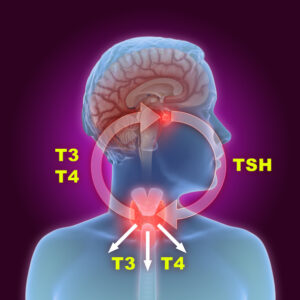UMBILICAL CORD
- The umbilical cord or funis forms the connecting link between the fetus and the placenta through which the fetal blood flows to and from the placenta.
- It extends from the fetal umbilicus to the fetal surface of the placenta .
- DEVELOPMENT :
- The umbilical cord is developed from the connective stalk or body stalk
- which is a band of mesoblastic tissue stretching between the embryonic disk and the chorion.
- Initially, it is attached to the caudal end of the embryonic disk , but as a result of cephalocaudal folding of the embryo and simultaneous enlargement of the amniotic cavity the amnioectodermal junction converges on the ventral aspect of the fetus
- As the amniotic cavity enlarges out of proportion to the embryo and become distended with fluid, the embryo is carried more and more into the amniotic cavity with simultaneous elongation of the connective stalk , the future umbilical cord.
STRUCTURE OF UMBILICAL CORD :
The constituents of the umbilical cord when fully formed as follows…….
- Covering epithelium :
- It is lined by a single layer of amniotic epithelium but shows stratification like that of fetal epidermis at term
- Whartons jelly :
- It consist of elongated cells in a gelatinous fluid formed by mucoid degeneration of the extraembryonic mesodermal cells
- It is rich in mucopolysaccharides and has got protective function to the umbilical vessels
- Blood vessels :
- Initially , there are four vessels – two arteries and two veins
- The arteries are derived from the internal iliac arteries of the fetus and carry the venous blood from the fetus to the placenta
- Of the two umbilical veins , the right one disappears by the 4th month, leaving behind one vein which carries oxygenated blood from the placenta to the fetus
- Presence of a single umbilical artery often associated with fetal congenital abnormalities
- Remnant of the umbilical vesicle (yolk sac ) and its vitelline duct :
- Remnant of the yolk sac may be found as a small yellow body near the attachment of the cord to the placenta or on rare occasion
- The proximal part of the duct persists as Meckel’s diverticulum
- Allantoins :
- A blind tubular structure may be occasionally present near the fetal end which is continuous inside the fetus with its urachus and bladder
- Obliterated extraembryonic coelom :
- In the early period , intraembryonic coelom is continuous with extraembryonic coelom along with herniation of coils of intestine (midgut )
- The condition may persist as congenital umbilical hernia or exomphalos
CHARACTERISTICS OF UMBILICAL CORD :
- Umbilical cord is about 40 cm in length with a usual variation of 30-100cm
- Its diameter is of average 1.5 cm with variation of 1-2.5 cm
- Its thickness is not uniform but presents nodes or swelling at places
- These swelling (false knot ) may be due to kinking of the umbilical vessels or local collection of Wharton’s jelly
- True knot (1%) are rare
- Long cord may form loop around the neck ( 20-30% )
- It shows a spiral twist from the left to right from as early as 12 th week due to spiral turn taken by the vessels -vein around the arteries
- The umbilical artery do not possess an internal elastic lamina but have got well developed muscular coat
- These help in effective closure of the arteries due to reflex spasm soon after the birth of the baby
- Both arteries and vein do not possess vasa vasorum
ATTACHMENT OF UMBILICAL CORD :
- In the early period, the cord is attached to the ventral surface of the embryo close to the caudal extremity
- But as the coelom closes and the yolk sac atrophies the point of attachment is moved permanently to the center of the abdomen at 4 th month
- Unlike the fetal attachment, the placental attachment is inconsistent
- it usually attaches to the fetal surface of the placenta somewhere between the centre and the edge of the placenta , called eccentric insertion
- The attachment may be central , marginal or even on the chorion leave at varying distance away from the margin of the placenta , called velamentous insertion
FUNCTION OF UMBILICAL CORD :
The umbilical cord serves a crucial function during fetal development and childbirth:
- Transportation of nutrients and oxygen :
- The umbilical cord connects the fetus to the placenta, which is attached to the mother’s uterine wall.
- Through the umbilical cord, nutrients, oxygen, and other essential substances pass from the mother’s bloodstream into the fetus’s bloodstream, supporting its growth and development
- Removal of waste products :
- The umbilical cord also facilitates the removal of waste products, such as carbon dioxide and other metabolic waste, from the fetus’s circulation.
- These waste products are then transferred back to the mother’s bloodstream through the placenta for elimination.
- Protection :
- The umbilical cord encases the umbilical vessels (two arteries and one vein) within a protective gel-like substance called Wharton’s jelly.
- This structure provides cushioning and protects the blood vessels from compression or damage during fetal movements or changes in the mother’s position.
- Communication :
- The umbilical cord is also thought to play a role in hormonal communication between the fetus and the mother, aiding in the regulation of maternal and fetal physiological processes during pregnancy.
- Childbirth :
- During childbirth, the umbilical cord serves as a conduit for the passage of the baby from the uterus to the outside world. After the baby is born, the umbilical cord is clamped and cut, severing the physical connection between the mother and the baby.
Overall, the umbilical cord is vital for the exchange of substances necessary for fetal growth and development, as well as for the safe delivery of the baby during childbirth.




